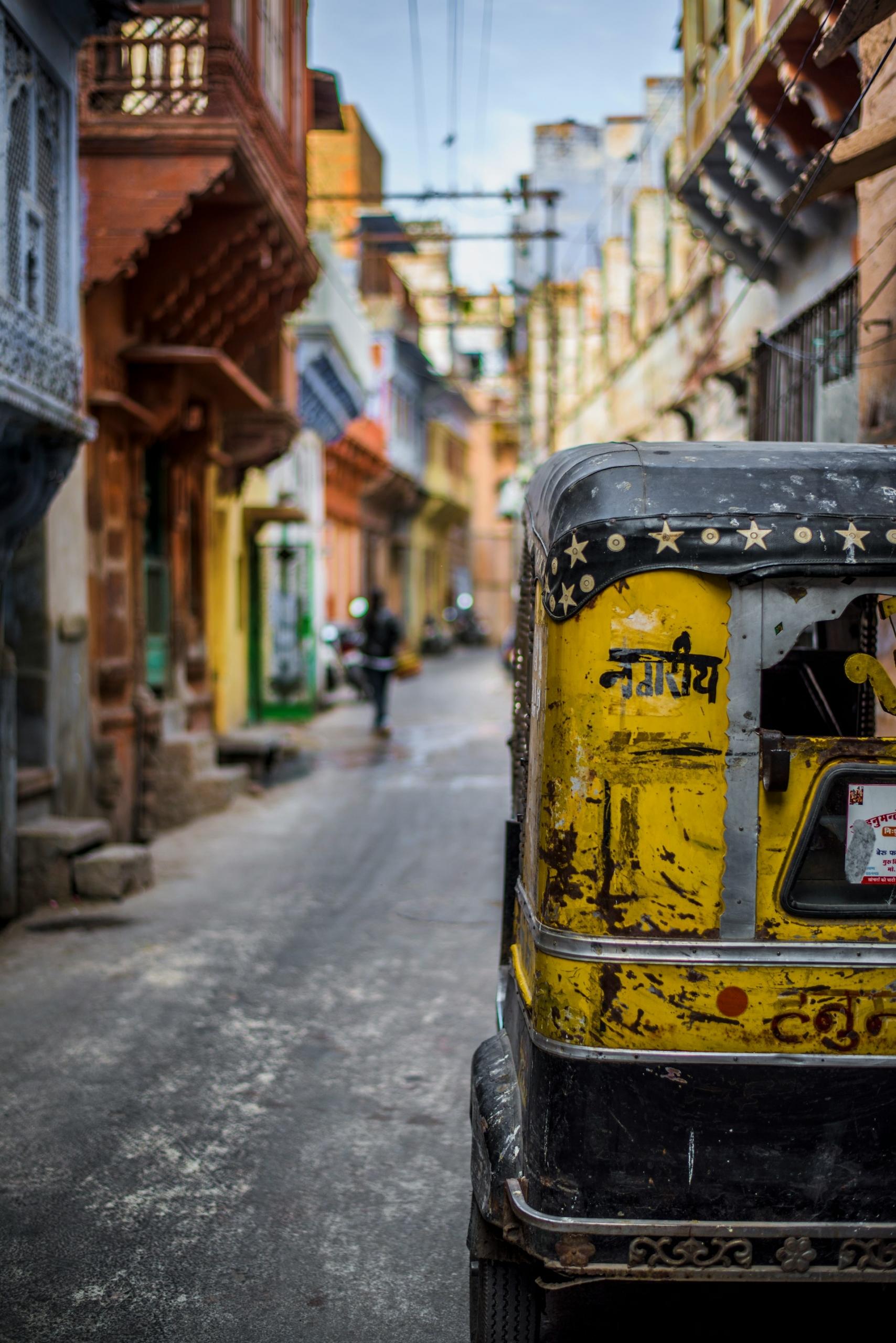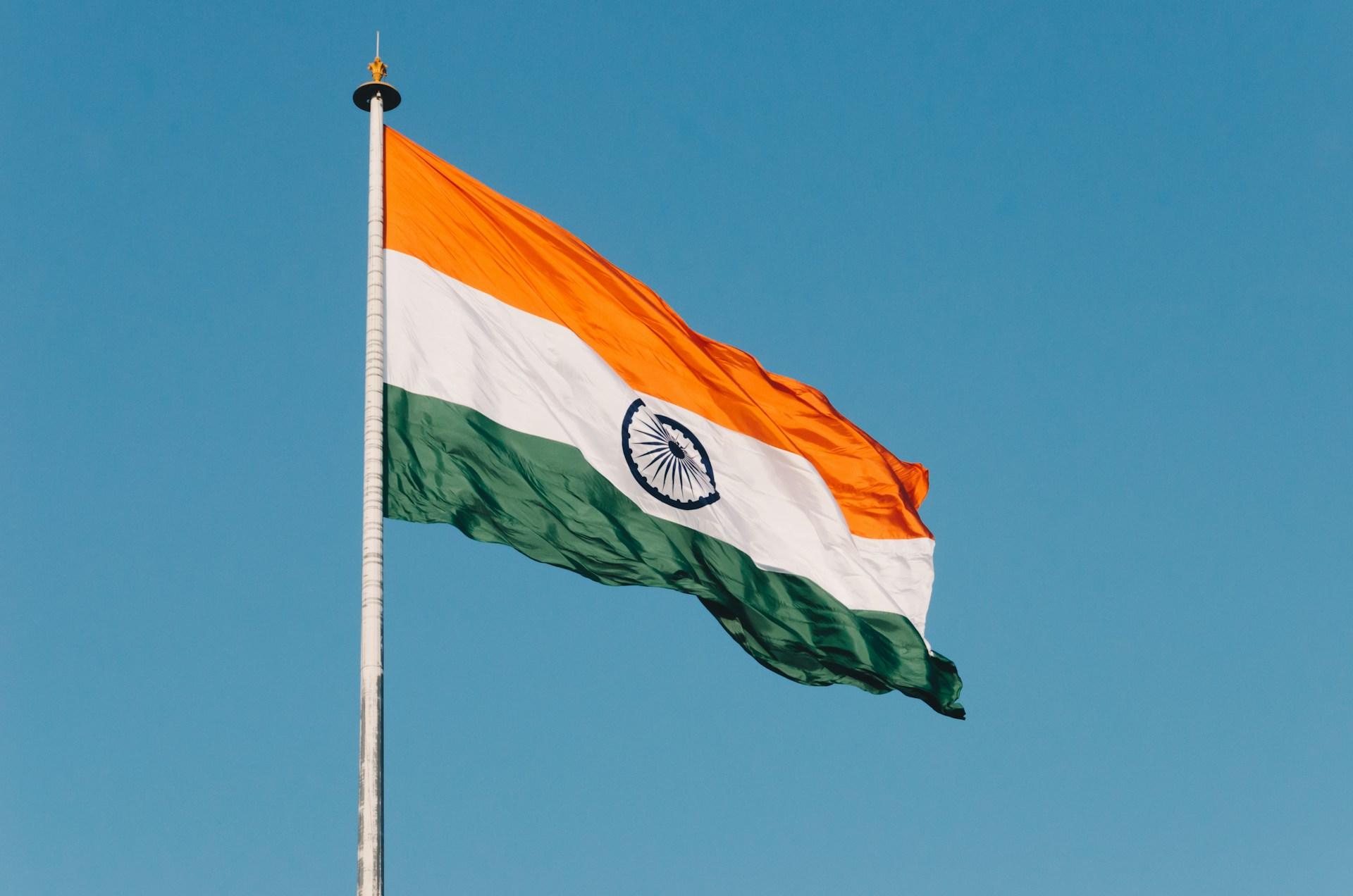India teaches me, again and again, that the categories into which I try to divide things don’t hold up.
Dena Moes
India is the world's seventh-largest country by landmass and, as of 2023, the world's most populated. These facts put Ms Moes' statement in an awkward light. Shouldn't it be obvious to all that such a vast land and population defies categories?
Perhaps no metric makes that clearer than language. India is home to more than 400 languages but, like American English, it has no declared national language. Over a million Indians speak some form of English, but Indian English study materials are almost non-existent. This guide helps fill that gap.

The English Language in India

British English has been featured on the Indian subcontinent for more than 400 years. Queen Elizabeth I granted the East India Company a charter to operate there in 1600. From then on, various enterprises built ports and roads, and explored this land's vast resources.
English-language training began in the 1830s, while British companies ruled India. Their English Education Act (1835) set aside funds to teach non-English speakers the language, British customs and ways of life. Thus, India became one of the first countries with compulsory education.
The system of company rule gave way to the British Raj in 1858. This was a formal government structure, reinforced with military might. British English usage became even more entrenched, thanks to the civil service system, which hired Indians.
By the time India gained its independence from Great Britain, English was the only functional universal language across the country. Modern Standard Hindi became India's official language upon the 1947 Partition of India.
What About the Indian Accent?
One might think that, after 400 years of British English speaking, the sing-song Indian accent would have disappeared. India and the United States offer fascinating - if cruel, studies on the subject.
Like the British in India, Americans attempted to 'reprogram' its indigenous people. Children were sent to boarding facilities far from their families and tribes. They were taught 'civilised' ways of dress and communication.
In neither case did these attempts succeed. Indian and Indigenous peoples did not completely assimilate. Jamaicans experienced the same phenomenon. Though a part of the population speaks Jamaican English, the Jamaican Patois remains the island's common language.
What Is Indian English?
Gandhiji can be a controversial figure in Indian society. Also, that film rather distorts certain facts to better present its narrative. Still, that clip is important because it describes our journey into Indian English.
Notice, at the beginning of the clip, how Sir Kingsley (Gandhi) speaks Standard British English (BSE), complete with Received Pronunciation (RP). However, as the story progresses, his accent evolves. By the film's end, Gandhi had shed all sounds of BSE and RP.

If nothing else, this epic traces the line from a nation whose only unifying language was English, to one of many languages. To this day, the English language plays a role in this country.
Hindi and English are co-official languages in this country.
The phrase Indian English is misleading. Recall that this country hosts more than 400 languages; more than one has married English. Thus, we get a list of names in the 'Singlish' pattern - the language's first syllable plus the '-glish' end, from English. Singlish is the Singaporean English dialect, of course.
Hinglish = Hindi and English; Minglish = Marathi and English; Manglish = Malayalam and English; Tenglish = Tegulu and English; Tanglish = Tamil and English; Kanglish - Kannada and English.
Of all these, we focus on Hinglish - the blending of this vast nation's two official languages. Hinglish's growing popularity, particularly in big cities like Mumbai and Kolkata, make our study important. Besides, even Bollywood is cashing in on Hinglish's popularity. Weaving English words and phases into film dialogue is the standard, these days.
All the writing in the world couldn't explain how seamlessly these two languages blend better than this Hindi-English speaker. Listen as she tells the story of her mother, a native Hindi speaker, failing to realise how much English she uses. Irish English speakers do the same; they only notice their heavy English usage when someone points it out to them.
Features of Indian English

One of Indian English's dominant features is outdated language. These days, Australian businesses hardly ever thank us for our patronage but, in Indian English, this word sees heavy usage.
Likewise, an Aussie shopkeeper might track client traffic to measure their business' success. In India, business owners prefer the outdated term, 'footfall': "a drive to improve footfall in individual stores", for example.
Other variations of English used Indian words regularly, including Australian English. Terms like 'pyjama', 'bungalow', and 'juggernaut' all come from the Indian languages. Each of them - and all the others we 'borrowed', has an entry in our dictionary.
One can buy an Oxford English dictionary or the Dictionary of American English. However, no Dictionary of Indian English exists.
Indian English makes amazing logic leaps. Other types of English accept words being both nouns and verbs, with pronunciation making the distinction between uses. For instance, 'EX-port' (noun) versus 'ex-PORT' (verb). Indian English speakers use the -tion suffix to turn verbs into nouns.
In our version of English, we "update our software when a new update comes out". In Indian English, we "update our software with the new updation". Likewise, where we might upgrade an airport or shop, Indian English begs us for patience 'during this upgradation'.
The Importance of 'Concept' in Indian English
Every language represents concepts. However, the Indian English language takes that mandate to a logical extreme. Consider this sentence: "Read the attached meeting agenda and revert to me."
In this sentence, 'revert' means 'reply'. It's a far more logical word choice than the one we commonly use. Whereas the Latin-based 'reply' means 'turn back' or 'fold over', 'revert' actually means 'return'.
Indian English speakers might ask someone to 'prepone' a meeting if their schedule opens up. By contrast, 're-schedule' feels heavy and complicated.
The Indian English 'do the... ' construction is gaining traction in English dialects around the world. Phrases like 'do the math' and 'I did a thing!' are now common for English speakers of all types.
Indian English speakers take this concept to the next level. "Do the needful and come back quickly" means "Take care of what you need to and return". Dev Patel's character used this type of flowery language throughout this English-Indian collaboration film.
Indian Slang and English Vocabulary
Language lives and evolves, with new expressions emerging to describe our ever-changing world. Around the globe, people use delightful words and phrases to express their ideas. Sometimes, these expressions land at just the right time and become universal.
Today's technology, particularly social media, gives us broader exposure to what distant people say. We learn the language that tells their stories and fold their best snippets into our vocabulary. How many of these Indian English phrases will you add to your lexicon?

Funda
All the words to describe this concept in our types of English are obsolete. Nobody goes around talking about 'this guy's bona fides' or, more insulting, his 'pedigree'.
Indian English gets the job done with 'funda', short for fundamentals. An employer might say: "His fundas are the right fit for the job." to describe a solid job candidate. You might arrange a date for your mate by insisting: "Give her a go, she's got all the right fundas!"
Bakwaas
This Indian slang term means 'backwards', but only in the sense of 'wrong'. You can say "I don't believe her, she was talking bakwaas." but not "Your shirt is on bakwaas.".
Bak Bak
To understand this Indian slang, think of a clucking chicken. It's a lot of noise with nothing important to relay. That's the sense of this phrase; it means 'chattering'.
When you have an argument with your partner, you might say: "All this bak bak and still no point made!". Beware that you might have to duck a flying projectile if you use this.
Jugaad
If you've ever been in a jam and needed to find a quick solution, you're looking for 'jugaad'. These days, we call such solutions 'hacks'. But that word has neither the romance nor the history that this Indian slang does.
Centuries ago, when things broke on sea-faring vessels, sailors would jury-rig a fix to keep things afloat. It's hard to trace jugaad's exact origins but, considering the British navy's impact on Indian English, this is a possible explanation.
Chakkar
This is the Hindu translation for 'dizziness', but it doesn't refer to vertigo and head-spinning. It's more like being in a tizzy, or perhaps a mild predicament.
"In what chakkar do I find myself now?" is one way to use this word, or "Those girls are having a chakkar". This Indian slang sounds like something a Nigerian English speaker might say in a similar situation.















